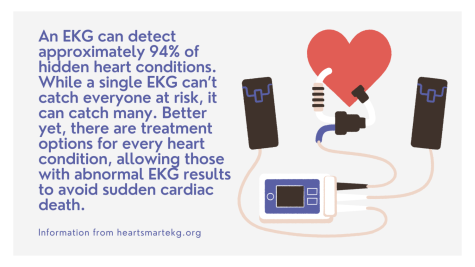Rise of therapy animals in classroom settings offers many benefits
Therapy animals have been used for many years now, dating back to the 1800s when Florence Nightingale, the founder of modern nursing, discovered that small pets reduced the levels of anxiety and stress in adult and youth psychiatric patients. According to the Alliance of Therapy Dogs, therapy dogs in schools have been used more commonly since the 2000s, being beneficial in the classroom environment. They offer physical benefits such as reducing blood pressure, increasing self-esteem and stimulating memory and problem-solving skills.
“I think they are beneficial in a lot of ways. They can help somebody throughout their everyday lives or during certain periods of high stress, such as hospital stays or finals week,” junior Gillian Karsten said.
Commonly confused with service animals, therapy animals are animals used to provide affection, comfort, and love for people of all sorts. They are commonly found in retirement homes, nursing homes, schools, disaster areas.Therapy dogs are trained to use their social instincts and learned social skills to provide social-emotional and cognitive benefits. On the other hand, service dogs are used more towards aiding a specific person with a disability like vision impairment or seizure disorders and staying with them 24 hours.
“They can help ease anxiety by giving the person something to focus on besides stressors or can help minimize the causes of anxiety,” Karsten said.
The Parkland shooting that occurred back in February 2018 left a very painful and tragic impact on the students and staff of Marjory Stoneman High School. After two weeks have passed since the shooting, therapy dogs were used to provide comfort and support to help return students to school.
Special education teacher and owner of BG’s facility dog, Buck, Amy Silverman, says that having Buck allows for a more comfortable and positive environment.
“We have groups that have experienced loss [grief groups] that Buck will go to and he is always available”, special education teacher Laura Stock said, “We will also take him down to the counselors office if there is a student struggling.”
During the day, Stock handles Buck and walks with him during passing periods, allowing him to visit a couple of classes. Teachers are also allowed to request Buck’s presence in the classroom to comfort students before a big test or exam.
“When I take him he gets access to a couple of math and science classes, he walks the halls and he’ll run errands with me to student services,” Stock said, “He’s kind of the mayor around here.”
Getting Buck certified wasn’t a quick process. Silverman said Buck was picked up from the streets by animal control, which would eventually end up at a kill shelter. Buck was taken by Paws Giving Independence (PGI) , an Illinois service dog program, because of his noticeably calm and loving demeanor. Buck was originally trained to do all sorts of public access situations because they weren’t sure yet if he would be a therapy dog or a service dog.
“They train them to a certain point and whatever they’re best at is the area they go into,” Silverman said.
The rise of therapy dogs in the classroom is a great way to provide children with an anti-stress environment according to National Institutes of Health [NIH] Having a dog present in the classroom allows for a more positive environment and distressing effects on the body. As stated by NIH, simply petting a dog has the effects of lowering blood pressure and heart rate.
“I think they did a phenomenal job placing him as a facility dog, I don’t see him [Buck] doing anything else,” Silverman said.









